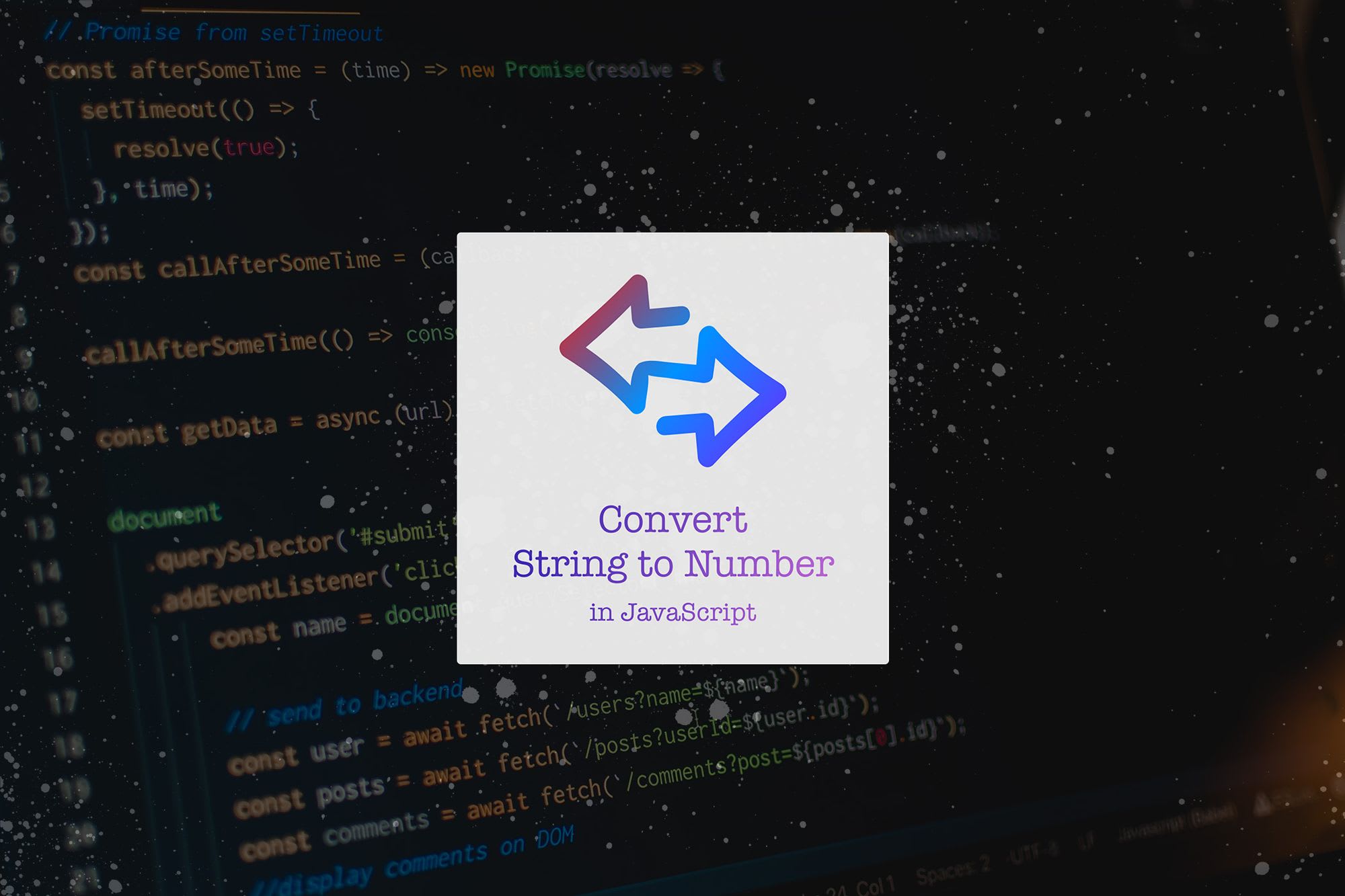
If you want to format the date in a more user-friendly format (e.g.If you want to make the date interpreted as UTC instead of local timezone, use toUTCString().If you only want to get the time part, use toTimeString().If you only want to get the date part, use toDateString().

localization), use toLocaleDateString (). If you want to format the date in a more user-friendly format (e.g. If you want to make the date interpreted as UTC instead of local timezone, use toUTCString (). Date. If you want to get both the date and time, use toString (). javascript var d new Date ('May 1,2019 11:20:00') console. If you have a valid date string, you can use the Date.parse() method to convert it to milliseconds. Example: In this example, we will convert a string into a date by creating a date object. If the this value does not inherit from Date.prototype, a TypeError is thrown. A string can be converted into a date in JavaScript through the following ways- Creating date object using date string: The date () create a date in human understandable date form. For example: "Thu 00:00:00 GMT+0000 (Coordinated Universal Time)".ĭ() must be called on Date instances. () returns a string representation of the Date as interpreted in the local timezone, containing both the date and the time - it joins the string representation specified in toDateString() and toTimeString() together, adding a space in between. Two-digit day of the month, padded on the left a. Hence it will require further processing if you expect a date object. It returns a numeric value instead of a date object. Date.parse() is an alternate option to convert the string date. It always uses the following format, separated by spaces: First three letters of the week day name. Use the Date.parse() Function to Convert String to Date in JavaScript. toDateString () interprets the date in the local timezone and formats the date part in English. Note Every JavaScript object has a toString () method. The Date object overrides the toString() method of Object. Date instances refer to a specific point in time. Convert a date object to a string: const d new Date () let text d.toString() Try it Yourself Description The toString () method returns a date object as a string. However, still calls this.toString() internally. 1 I have a set of CSV's that all got loaded with a date field like: Sunday Aug6:26 PM GMT I'm working on a way to take this date/time, and convert it to a proper timestamp in the format YYYY-MM-DD HH:MM In Python, I've tried something like below to return a proper timestamp. Method 1: Using the Date Constructor The Date constructor parses the string and returns a Date object representing the given date and time string. 6 Answers Sorted by: 0 It will depend on the format you are allowing a user to input into the TextbooktextBoxId, if you are ensuring a valid format, for example MM/DD/YYYY then you can use Javascript Date to parse the string into a JS Date instance: var d Date.parse (dateString) Another example: var d Date. Because Date has a method, that method always takes priority over toString() when a Date object is implicitly coerced to a string. To convert a String to a Date in JavaScript, you can use the Date constructor, Date.parse(), or toDateString() method. The toString() method is part of the type coercion protocol. Object.prototype._lookupSetter_() Deprecated.Object.prototype._lookupGetter_() Deprecated.Object.prototype._defineSetter_() Deprecated.Object.prototype._defineGetter_() Deprecated.strftime() for better formatting): def convert_to_timestamp(date_string): I'll leave all versions of this function up just in case something doesn't work.

The edit above is just a roundabout way of doing the same thing. Just remove the space in the formatting of your original function.

Last edit: Alas, all of this is not needed, assuming the input in the error message.

If your input is like the one in the error, then this is how you'll write the function: def convert_to_timestamp(date_string):ĭate_string = date_string.replace(",", " ") # Replace the comma after the day with a space strftime() formats the string to make it look like what you described it's optional.Įdit: A commenter said that in the error message, the string the function receives has no space between the comma and the year date, which is different from the input you mentioned in the question above. Return timestamp.strftime('%Y-%m-%d %H:%M') Timestamp = datetime.strptime(date_string, date_format) Try this instead:ĭate_string = date_string.replace(",", "") # Remove the comma after the day I think the main cause of this issue is the comma. The parse () method takes a date string (such as 'T14:48:00') and returns the number of milliseconds since January 1, 1970, 00:00:00 UTC.


 0 kommentar(er)
0 kommentar(er)
